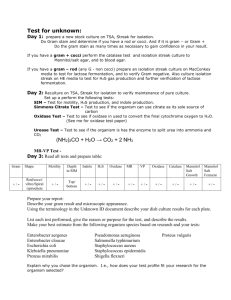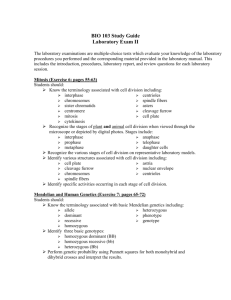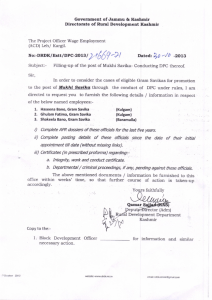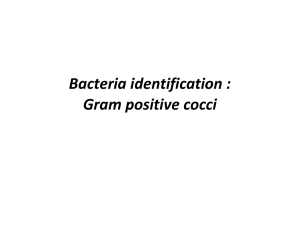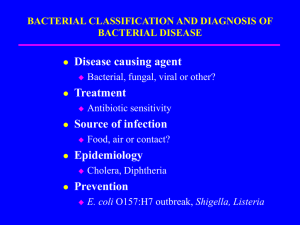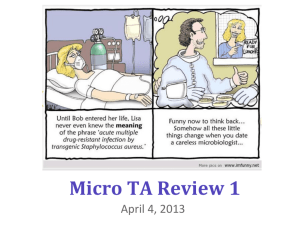Unknown Instructions
advertisement
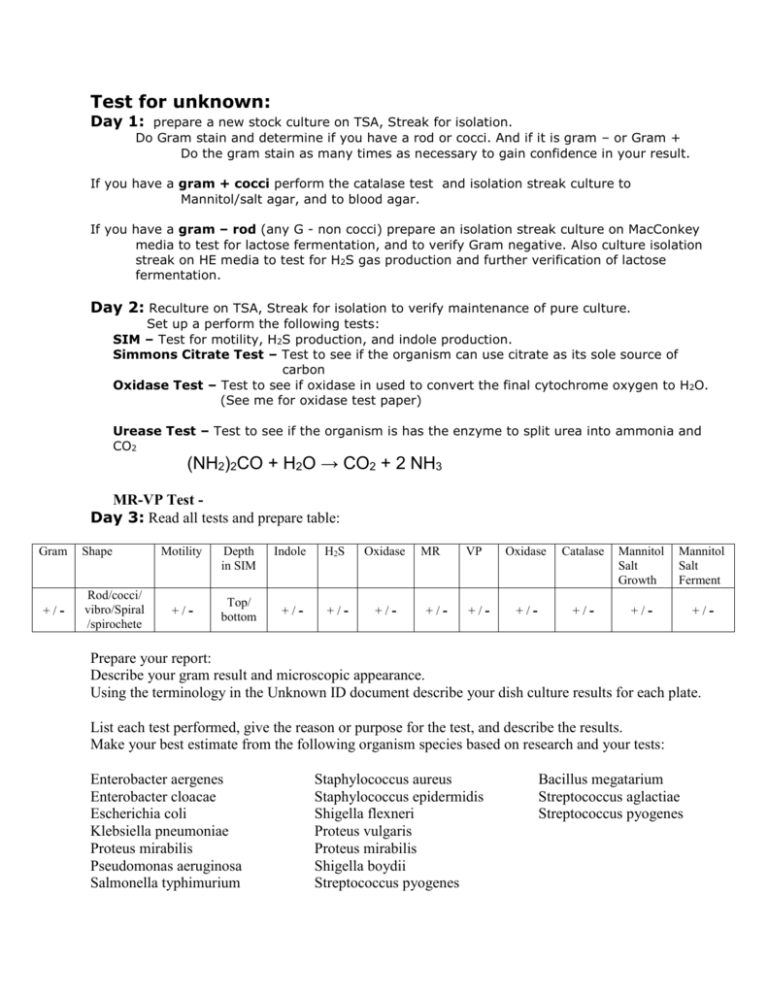
Test for unknown: Day 1: prepare a new stock culture on TSA, Streak for isolation. Do Gram stain and determine if you have a rod or cocci. And if it is gram – or Gram + Do the gram stain as many times as necessary to gain confidence in your result. If you have a gram + cocci perform the catalase test and isolation streak culture to Mannitol/salt agar, and to blood agar. If you have a gram – rod (any G - non cocci) prepare an isolation streak culture on MacConkey media to test for lactose fermentation, and to verify Gram negative. Also culture isolation streak on HE media to test for H2S gas production and further verification of lactose fermentation. Day 2: Reculture on TSA, Streak for isolation to verify maintenance of pure culture. Set up a perform the following tests: SIM – Test for motility, H2S production, and indole production. Simmons Citrate Test – Test to see if the organism can use citrate as its sole source of carbon Oxidase Test – Test to see if oxidase in used to convert the final cytochrome oxygen to H2O. (See me for oxidase test paper) Urease Test – Test to see if the organism is has the enzyme to split urea into ammonia and CO2 (NH2)2CO + H2O → CO2 + 2 NH3 MR-VP Test Day 3: Read all tests and prepare table: Gram +/- Shape Rod/cocci/ vibro/Spiral /spirochete Motility +/- Depth in SIM Top/ bottom Indole H2S Oxidase +/- +/- +/- MR +/- VP +/- Oxidase Catalase Mannitol Salt Growth Mannitol Salt Ferment +/- +/- +/- +/- Prepare your report: Describe your gram result and microscopic appearance. Using the terminology in the Unknown ID document describe your dish culture results for each plate. List each test performed, give the reason or purpose for the test, and describe the results. Make your best estimate from the following organism species based on research and your tests: Enterobacter aergenes Enterobacter cloacae Escherichia coli Klebsiella pneumoniae Proteus mirabilis Pseudomonas aeruginosa Salmonella typhimurium Staphylococcus aureus Staphylococcus epidermidis Shigella flexneri Proteus vulgaris Proteus mirabilis Shigella boydii Streptococcus pyogenes Bacillus megatarium Streptococcus aglactiae Streptococcus pyogenes Explain why you chose the organism. I.e., how does your test profile fit your research for the organism selected?
